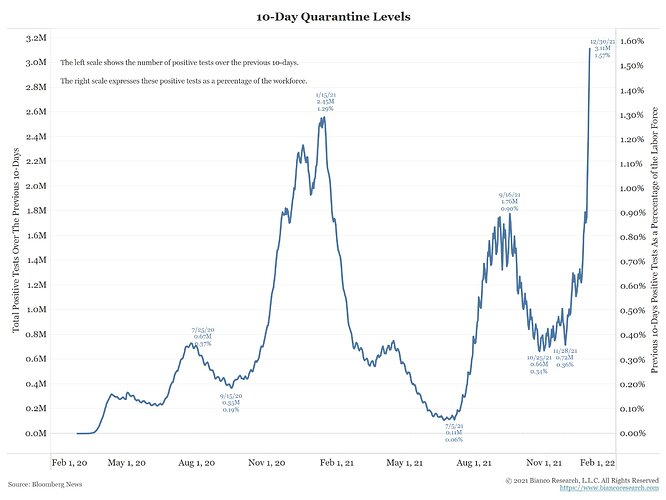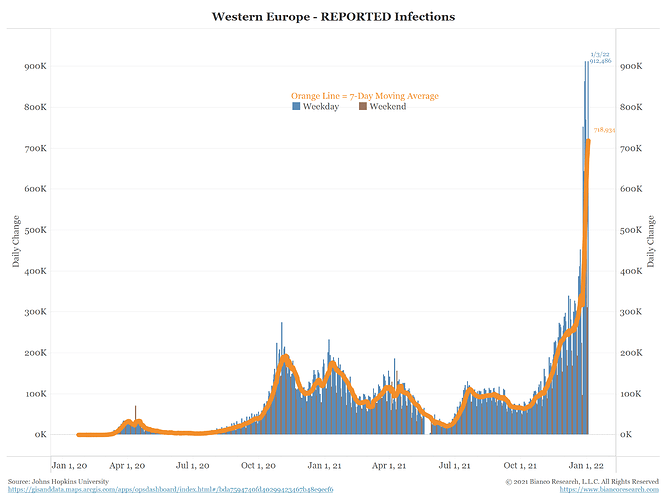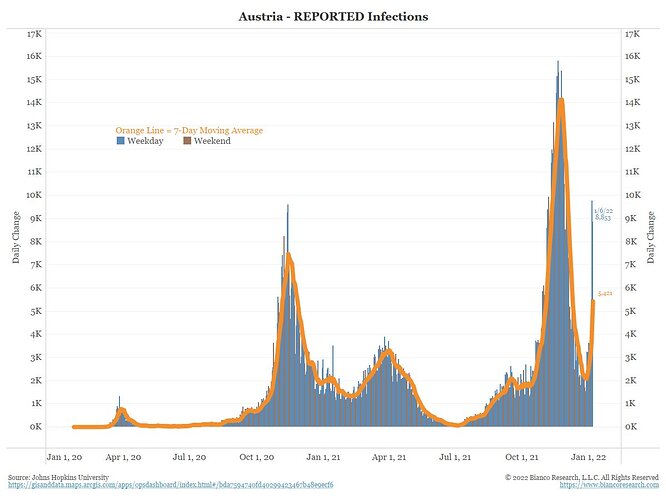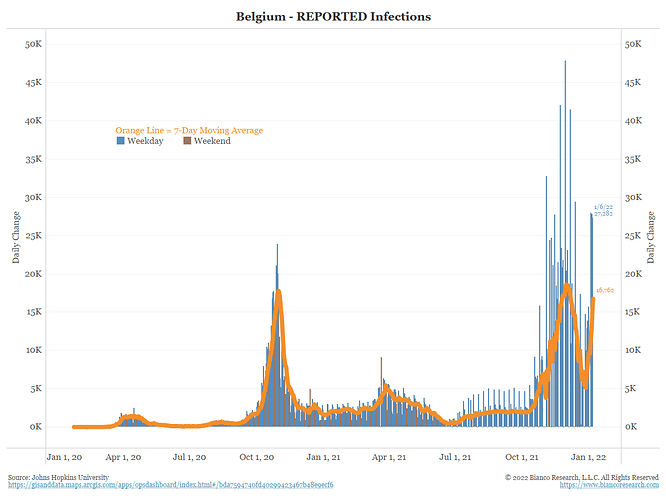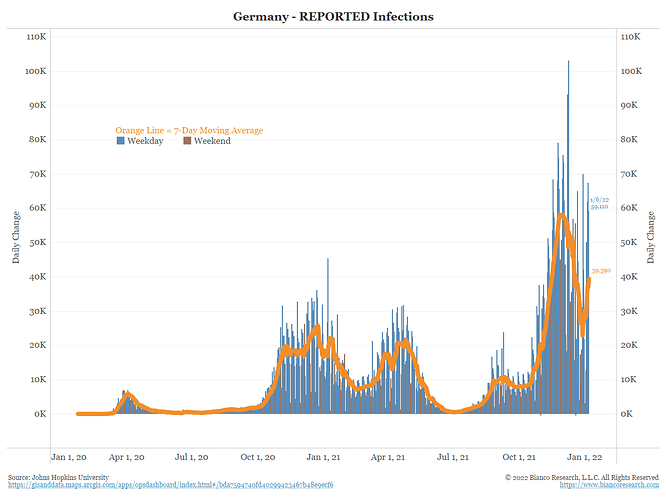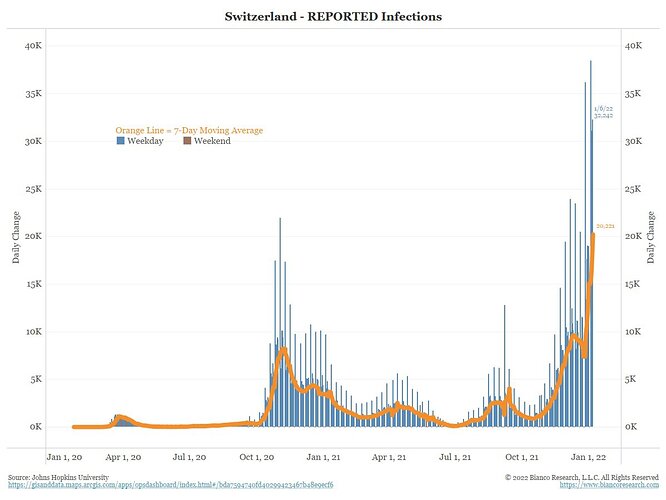Jim / Scott,
According to this article, average hospitalizations soared to 131,370 over the past week, close to the peak of hospitalizations during the early days of January last year, according to Johns Hopkins University data. I will send you the whole article via email in case you don’t have a subscription to Barrons.
Regards
James
https://www.barrons.com/articles/u-s-covid-hospitalizations-near-january-2021-peaks-51641852248?mod=bol-social-tw
U.S. Covid Hospitalizations Near January 2021 Peaks
U.S. cases of Covid-19 requiring hospitalization are close to reaching the peak of last year, according to the latest data.
The average number of Covid-19-related hospitalizations nationwide soared to 131,370 over the past week, which is 96% of peak hospitalizations during the week of Jan. 4 to Jan. 10, 2021, according to Johns Hopkins University data.
That includes 22,125 coronavirus patients in intensive care beds nationally, or nearly 76% of the ICU beds needed in early January last year.
Almost 25% of hosptials are reporting “critical staffing shortages,” according to USA Today, citing data from the Department of Health and Human Services. That’s the most since the start of the pandemic.
The seven-day average of newly reported coronavirus cases has risen to 709,633, and is on pace to triple the coronavirus record set last January, when the U.S. averaged one-quarter of a milion daily cases, according to The Wall Street Journal’s analysis of Johns Hopkins University data.
The U.S. reported 307,208 confirmed cases on Monday, and 330 deaths, according to Johns Hopkins.
